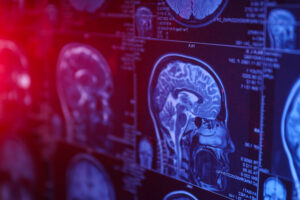We all know that radiology plays a critical role in diagnosing and tracking various medical conditions. To manage the complex medical imaging workflow, modern healthcare facilities employ sophisticated technologies, including the Picture Archiving and Communication System (PACS) and the Radiology Information System (RIS). So, how do these systems collaborate to streamline radiology processes?
Understanding PACS: The Digital Imaging Hub
PACS, or Picture Archiving and Communication System, is a comprehensive digital imaging platform. Its primary role is to acquire, store, retrieve, and distribute medical images like X-rays, MRIs, CT scans, and ultrasounds. PACS replaces traditional film-based systems.
Our ProtonPACS solution is often used in Radiology PACS systems, and Orthopaedic PACS systems.
PACS Workflow:
- Image Acquisition: Radiology machines capture patient images digitally.
- Storage: These digital images are stored securely in a central database, ensuring instant accessibility.
- Image Viewing: Radiologists access and interpret images from any workstation, enabling rapid diagnoses.
- Distribution: PACS facilitates secure image sharing, often integrated with electronic health record (EHR) systems.
Understanding RIS: Orchestrating Radiology Workflow
RIS, or Radiology Information System, is specialized software tailored for radiology departments. It manages administrative, operational, and financial aspects of radiology workflows, optimizing scheduling and tracking.
RIS Functions:
- Patient Scheduling: RIS streamlines appointment scheduling, reducing wait times and resource allocation issues.
- Patient Data: It stores patient demographics, medical histories, and referring physician details, ensuring accurate records.
- Workflow Management: RIS tracks each radiologic exam’s progress, helping radiologists prioritize and manage their workload.
- Reporting: Radiologists use RIS to generate detailed reports for sharing with referring physicians and EHR storage.
Integration and Synergy: PACS and RIS in Harmony
PACS and RIS, though serving distinct roles, achieve their full potential through seamless integration:
- Enhanced Efficiency: Integration minimizes duplicate data entry and streamlines workflows, alerting radiologists when images are ready for review.
- Accuracy: Data consistency across the radiology department reduces scheduling, billing, and reporting errors.
- Patient Care: Real-time integration grants rapid access to patient images and reports, expediting diagnoses and treatments.
- Financial Management: RIS oversees billing and financial aspects, ensuring fair compensation for services.
PACS and RIS systems synergize to elevate patient care, streamline workflows, and enhance efficiency in healthcare facilities. By managing imaging and administrative tasks effectively, these systems empower healthcare professionals to deliver precise diagnoses and swift treatments, ultimately improving patient outcomes. As technology evolves, the collaboration between PACS and RIS remains essential in modern radiology practices.

